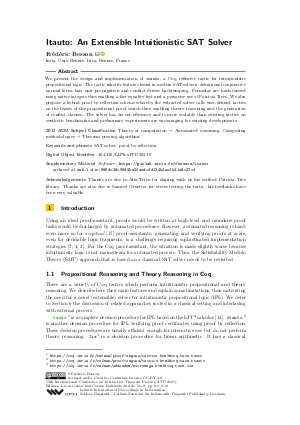LIPIcs.ITP.2021.9.pdf
- Filesize: 0.75 MB
- 18 pages

 Creative Commons Attribution 4.0 International license
Creative Commons Attribution 4.0 International license

We present the design and implementation of itauto, a Coq reflexive tactic for intuitionistic propositional logic. The tactic inherits features found in modern SAT solvers: definitional conjunctive normal form; lazy unit propagation and conflict driven backjumping. Formulae are hash-consed using native integers thus enabling a fast equality test and a pervasive use of Patricia Trees. We also propose a hybrid proof by reflection scheme whereby the extracted solver calls user-defined tactics on the leaves of the propositional proof search thus enabling theory reasoning and the generation of conflict clauses. The solver has decent efficiency and is more scalable than existing tactics on synthetic benchmarks and preliminary experiments are encouraging for existing developments.





Feedback for Dagstuhl Publishing